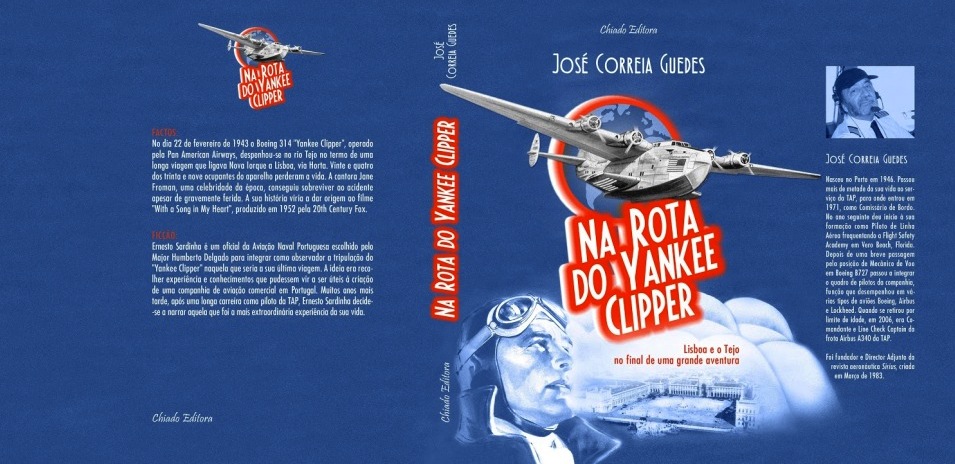“When I joined Pan Am in 1942, one of the first phrases that I learned was “flying by the seat of your pants” – an old adage used to describe proper flying techniques. Before high-altitude jets flew commercially, we had to fly through wide storms rather than over them. To do so, we developed a seat of the pants technique – literally- whereby our bottoms were being bumped, rather than slipping or sliding.“Today, we have the sophistication and luxury of jetliners to fly over many of those boiling storm masses, cabin pressurization for oxygen supply, and radar to show us the dangerous storm cells, enabling us to fly around the violent depictions shown on the weather radar screen.
“When crossing an ocean in a Pan Am flying boat such as the Boeing-314, we navigated celestially using an octant. Every Pan Am pilot was required to learn two methods of star computations to lay a position on the chart. On a Boeing-314 we had a glass hatch atop the cabin through which we could “shoot stars”. When the sky was partly cloud-covered, we plotted whatever navigational stars we could see. If the sky was overcast we could not use our octants.
“In the daylight we could see wind streaks on the surface of the sea, shiny lines running 90 degrees to the waves. If we had cloud cover below as well as above, we would navigate by dead-reckoning, using the wind we thought we had. If clear below and we passed a ship we could see, we could compare our position with theirs.
“Approaching a coast, such as much of the Atlantic shoreline, which could be a mass jungle, while receiving poor or no radio signals, we aimed at the shore off-coast 30 degrees left or right – wherever we considered the destination most likely to be. When we arrived at the coast we then followed the shore to our destination. If we had flown straight at the destination and saw nothing, we would not have known which way to follow the coast.
“During a typical 11-12 hour flight, we usually took turns resting every 4 hours in our crew bunks. The props turned at 1,600 RPM’s and they vibrated violently. Consequently, it took some time to fall asleep.
“During World War II on trans-oceanic flights, Pan Am crews had to learn how to decipher coded messages. At departure we received an envelope which was not to be opened until we were aloft containing the keys to the codes which were valid for only a certain number of hours and then changed.
“The Boeing-314 crew consisted of a captain, first officer, second officer, third officer, fourth officer, first and second flight engineers and one Morse Code radio-operator plus varying number of flight personnel. Four or more male stewards were aboard, depending on the aircraft’s configuration. The work on board was considered too strenuous for stewardesses. Hefty, large-capacity life rafts had to be handled and there were ponderous bunks to be prepared for sleeping.
“The entire aircraft was First Class, and our flying boats often carried kings, queens, presidents and potentates. We were instructed to be pleasant with them if they addressed us, but not to seek out conversation. President Juan Trippe wanted us to be able to converse intelligently by keeping up with current events, and having a good knowledge of history and sensitive political issues.
“Passengers enjoyed delicious meals that were prepared onboard and served in a 14-place dining room with black walnut tables in a silver and blue décor. The food was elegantly served in courses by stewards in white jackets, on pale blue table cloths with matching monogrammed napkins and china. Wine was always served and dinner was topped off with fancy desserts, fruits and cheeses, and a cordial of crème de menthe. Sometimes there was a captain’s table. After dinner, the dining room was converted into a lounge where some passengers chose to relax while others went to their cabins to sleep.
“The Boeing-314’s were retired from Pan Am’s service in 1946, after World War II. Not one survived, and only a few parts exist in museums which to me, is very sad. Clare Booth Luce, a playwright, United States Congresswoman and Ambassador to Italy, returned to the US aboard a flight on the Boeing-314 and said “Years from now, we will look back upon Pan American’s flying boats as the most glamorous, romantic air travel in the world”.
“To me, experiencing this phase of early commercial aviation was one of the best times of my life. Having had the opportunity to be part of a Boeing 314 crew was an outstanding adventure for a young man, and I still recall it well at age 94, and thrill to the memories of that great aircraft and the exciting era of world history, all made possible by my years with Pan Am.”
Blogue do livro "Na Rota do Yankee Clipper" - de José Correia Guedes @ Chiado Editora, Lisboa. Dezembro de 2012.
Um relato do Comandante Nash, veterano do Boeing 314
Subscrever:
Mensagens (Atom)

